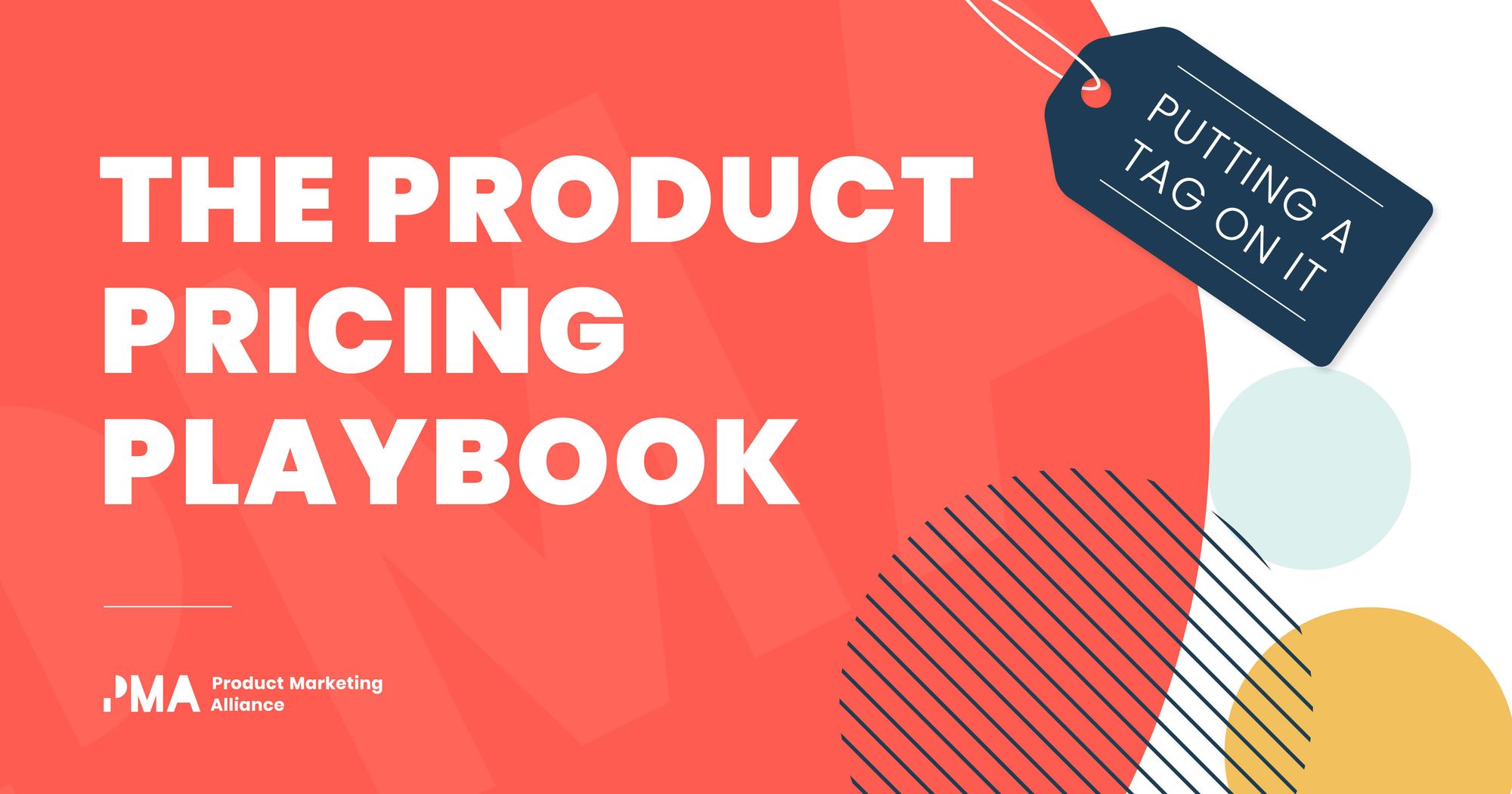This article is based on Tamara’s insightful interview on the Meet the Masters podcast.
As a product marketer, you’re uniquely placed to drive growth at your company, but where to begin? Should you focus on acquiring new customers? Or perhaps retaining existing customers?
Believe it or not, monetization can have a far greater impact than acquisition or retention, so we should all be laser-focused on our pricing strategies, yet hardly anyone is.
This presents a huge opportunity for product marketers to raise their hands and step up. It's a chance to own an activity that will have a massive impact on the business and customers. Plus, it's really fun! (Seriously, I love to nerd out on pricing!)
So, I’m here to share how you can tackle pricing and become a trusted advisor on an exciting growth lever. Here’s what we’ll cover:
- Why product marketers should own pricing strategy
- How to take ownership of pricing in your organization
- Key pricing strategies like value-based and competitive pricing
- Top tips for implementing a new pricing approach
- How to measure the success of your pricing efforts
- Gauging customer reaction to price increases
Let’s jump in!
Why product marketers should own pricing
As a product marketer, it’s your job to understand the data – who are your customers, how do they use your products, how do they buy, and why do they churn? As you do this research, you'll uncover all kinds of insights. If one of those insights is that optimizing pricing would lead to better business results or customer impacts, that's a great point to bring forward.
Let’s say you’re responsible for the adoption of a feature available only to customers on a higher-tier plan, and maybe you’re struggling to get adoption – that could be because most customers don't even have access to that feature since no one is upgrading their package. So, you start investigating and quickly realize that it’s time to revisit your pricing strategy.
In this pretty common scenario, it wasn’t originally your job to do pricing, but you uncovered an insight that you could share with your leadership team as a way to jumpstart a rehaul of your pricing strategy.

How to take ownership of your organization’s pricing strategy
Whether you're a SaaS company or you sell physical products, one of the most unique things about pricing is that no one really wants to own it. Everyone has an opinion, but no one wants to raise their hand and be the one accountable for optimizing it.
There’s all this fear of pricing because it’s hard. If you’ve read any studies on pricing, you know there’s no one right way to do it and, more often than not, we get it wrong. Even once you’ve launched a new pricing strategy, you need to expect continuous optimization – you won't nail it right out of the gate. That can feel like a lot of pressure.
Now, I don’t want to minimize the fear of pricing, but I will say that it’s often unfounded. People who’ve taken the jump and leaned into pricing – whether owning it for a new feature, running a promotion, or doing a complete overhaul – quickly gain competence.
It's all about having an experimental mindset and making the most of all the frameworks out there. The more you think about it that way, the more you're released from the fear of getting it right immediately.
So, with all that said, just having the conversation – whether it’s with the executive team, leadership, or your own product marketing team – and volunteering to take on pricing is the first step. Raise your hand and say “There's an opportunity to improve our pricing. I think it's broken, and here's some data to back that up.” That’s the best place to start because rarely will someone hand you a pricing project.
Then, once you’re given the go-ahead to get stuck in, the number one thing you need to do for a pricing project is form a pricing committee. You can't do it alone. You need finance to support your business case. You need insights from sales folks who talk to customers daily and can test what will land. You need the product team to ensure that you can build or gate features in the way you have in mind.
Four key pricing strategies
There are a lot of different pricing strategies out there, but for today, we’ll focus on the ones I get asked about most often:
- Value-based pricing,
- Usage-based pricing,
- Competitor-based pricing, and
- Promotions and discounts.
1. Value-based pricing
Value-based pricing anchors the price a customer pays around the value they get from your product. The opposite of value-based pricing would be feature differentiation with pricing tiers based only on what features you unlock at each level.
To implement value-based pricing, you need to understand the metric that links to customer value. In other words, how are customers using your product to drive value?
Let me share an example from Unbounce, where I used to work. We used to price based on the number of landing pages. However, we found that this metric had no link to the value customers got. Someone could have one high-traffic page or 100 low-traffic ones, so the number of pages wasn't an effective value metric – the right value metric was conversions.
Customers felt that they’d been successful with Unbounce if they’d driven more conversions using the product. So, we set pricing tiers based on the number of conversions – up to 500 conversions in one tier, up to 1000 conversions in the next tier, and so on. We still had some feature differentiation to increase usage at higher tiers, but the core value metric was conversions. That’s value-based pricing.
2. Usage-based pricing
Value-based pricing and usage-based pricing go hand in hand. In fact, I tend to think of usage-based pricing as a type of value-based pricing model.
Usage-based pricing is a double click into the value metric we were looking at a moment ago. Unlike Unbounce's value-based pricing, which gave a range of conversions per tier, usage-based pricing charges only for actual usage – no ranges.
MailChimp was an early of this strategy. They charged per email sent and per contact. Phone bills also do this – remember paying per text or minute? That’s usage-based pricing. However, you can't charge per usage without first identifying the right value metric. That's why I see usage-based as a subtype of value-based pricing.
3. Competitor-based pricing
The ethics of competitive intelligence (CI) is an endlessly fascinating topic and one of the subsections of CI is competitive pricing, which can lead you into some ethical dilemmas around price fixing and collusion. Let’s explore what you can do to navigate these issues.
First up, when you’re looking into joining a product marketing team, it's important to understand a company's values upfront – during the hiring process. If leadership thinks price fixing or colluding with competitors is okay, that's probably not the kind of company you want to work for. Find an employer that aligns with your morals, and take time in interviews to assess that.
Personally, I haven't experienced this dilemma. Most companies I've worked for serve SMBs, solopreneurs, or consumers in open markets, so our pricing information is public. We’ve been aware of competitors’ pricing, but our transparency around pricing meant the public could always hold us accountable. Ultimately, it all comes down to doing the right thing for customers.
In enterprise sales-led models where you have to speak to the sales team to get a price, it can be a little different. Everything is behind closed doors, so it’s perfectly possible to secretly coordinate with competitors to raise prices because you think willingness to pay is increasing. However, this is not only super unethical, it also fails to put the customer first.
Remember that while you have competitors, you also offer a unique solution. There’s a reason why your customers choose you over competitors. It's worth your time to understand what that is and how much customers will pay for your differentiation.
You may only offer one or two features that are different from your competitors, but maybe those features are so valuable to customers that they allow you to charge three times more.
In short, when it comes to competitive pricing, I'd recommend using your competitors as a guardrail to understand market expectations but don't spend too much time thinking about it – focus on your customers instead.
4. Promotions and discounts
There are two vital considerations whenever you’re introducing a promotion or discount:
- Making sure that profitability remains strong
- Ensuring that the perception of value doesn’t take a hit
Let’s start with the point about profitability. How this works is going to depend on your industry. If you're in physical goods, then you're probably going to have a lower profit margin than if you're selling a SaaS product, for example, so you need to work with your finance team to figure out the scope of the promotions you can apply. It might be that you can’t go over 10% without losing money, for instance.
On the flip side, perhaps by giving a discount, you're decreasing your customer acquisition cost, and you can factor those savings into the size of the discount you decide to apply. Either way, there are important financial calculations to be made.
In SaaS, as profit margins are often 70-80% or more, profitability will rarely take a hit because of a short-term promotion. But that's where the perception of value is vital. It damages a brand and product to always run promotions. Customers come to expect deals and end up thinking they’re being overcharged if they have to pay full price.
With all that said, it is possible to use discounts intelligently, and there's a seasonality that makes sense for promotions – many brands do them for Black Friday, for example. I also love the trend of brands not doing Black Friday promos and taking a stance against consumerism. I think they'll see some benefits from being different.
Another idea is cohort-based promos. Rather than offering a blanket discount, identify specific customer groups behaving in a way that suggests a promo would help move them forward.
Maybe you have thousands of 30-day trial users each month, and some are engaged throughout but don't convert. They might need more time. That's a great group to offer a discount or promo via email. That way, the promotion isn’t available to everyone, it isn’t public knowledge, and you don't damage the perception of your product’s value or take a huge profit hit. It’s a very strategic promotion.

Top tips for implementing a new pricing strategy
So, we've looked at a few different pricing strategies. But once you've figured out the right one for your organization, how do you actually implement it and introduce a new price to the market? Let’s dive into a few tips.
1. Experiment early
One thing I always recommend is taking time to experiment and test things out as you're building your strategy. You don't want to just do some research, discover a new value metric, build out the pricing packages and product changes, and then launch it all only to discover flaws once it's public. Even if you do everything right, sometimes when you put something out there, it just doesn't land as expected.
So, as part of your implementation strategy, start experimenting early – don't wait until you’ve rolled out your new pricing to all of your customers. That could mean testing with a small cohort of existing customers or putting up a little pricing study on your site and driving a small amount of traffic to it – it depends on what exactly you're trying to test. Just get those experiments in before the full launch.
2. Treat your price launch like a product launch
When it’s time for the price launch, run it like a product launch and build a cross-functional launch team – this might be different than the core pricing committee, though there’ll likely be some overlap. You’ll need to include someone from each function, have the value prop and messaging for the new pricing dialed in, and determine how to roll it out to different customer segments.
There's also a lot of customer management that people don't think about. You'll need to decide if existing customers will stay on their current plans or move to new ones, if there will be a transition period, and how much churn you’re willing to take on.
Your cross-functional pricing launch team is going to help you figure all this out and implement your new strategy as seamlessly as possible.
3. Be ready to optimize
According to a study from ProfitWell, companies that update their pricing at least every six months see nearly double the average revenue per user of those that update once a year or less. That’s huge!
However, despite the enormous impact you can drive when you make pricing a priority, the same study found that the average company spends less than 10 hours per year on pricing. Crazy, right? Pricing isn’t a set-it-and-forget-it kind of deal.
So, if you decide to prioritize pricing (and you should!), go in knowing that you’ll need to keep fine-tuning your strategy, and build in a timeline for ongoing optimization. To this end, I recommend making a monetization roadmap, like you would for a product. This should incorporate implementation cycles to protect your business against any volatility that might arise as a result of pricing changes.

How to measure the success of your pricing strategy
If you're going to commit to pricing work, you should be continuously reviewing metrics to see if it's working, just like you would with any other business initiative.
How you measure success depends on your goals. For example, maybe you’ve been having trouble with ascension – getting people to upgrade their plans – and you want to address that with your pricing strategy. In that case, you’ll want to track your ascension rates over the next three to six months. Are new customers ascending the plan in the time that you expect them to? If not, go back and optimize.
Or, maybe you introduced a lower price point to tap a new market. Check if you're getting the expected market share, how profitable those customers are, and if you’re retaining them.
How long you need to keep a close eye on these metrics will vary based on your objectives – impact on churn will take longer to assess than any changes to the conversion rate, for example – but I'd advise closely monitoring impact for at least the first three months post-launch.
If after six months, things appear to have stabilized and your key metrics are trending up, you can move into the maintenance phase. Do some ongoing experiments if you want to optimize further. But if you don’t have time for that, it’s still a good idea to check in periodically. Here are a few events that might signal that it’s a good time to refresh your pricing once more:
- A new competitor enters the scene
- An existing competitor significantly changes their pricing
- Your business decides to move into a new market
- A merger or acquisition reshapes your business.
Outside of these kinds of major events, reviewing your pricing quarterly will keep you ahead of most competitors.
How to gauge the impact of price increases on customer loyalty
No one likes higher prices. Think about how we feel as consumers when Netflix raises its rates – at first, it's annoying, but then you think, well they're a business, and finally you evaluate if it still feels like a fair exchange of value.
I'm not expecting customers to like the change, but I want the value to resonate with them and I want them to feel like the exchange is still fair. With that in mind, there are a few key indicators that I look at.
The first is churn. I always closely track if pricing changes impact churn rates for the affected customer cohorts after the increase. A noticeable spike would tell me we need to take a step back, talk to some customers, and figure out where we miscalculated so we can make adjustments.
The second is customer sentiment, which is harder to qualitatively assess. I try to be really transparent – I like to publish blog posts about the strategy and send emails clearly explaining the ‘why’ behind increases. Then I'll look at the commentary we get back – what are people saying in comments or on social media?
The third thing I keep an eye on is support ticket volume – are we getting a noticeable increase in complaints? If we see indications that customers no longer feel they're getting fair value for what they pay, that’s a sign that we might need to adjust prices once more.
So, those are the three areas I'd monitor: churn, customer sentiment, and support tickets.

Key takeaways
Pricing may seem complex, but optimizing your strategy can have an outsized impact on business growth. As you build expertise in this undervalued area, keep these lessons in mind:
💡 Focus on the value metric that drives customer outcomes – not just features. That way, you’ll create pricing that resonates.
🤝 Form a cross-functional pricing committee and launch team to align on strategy. More minds and expertise give better results.
🔎 Experiment early and often when testing new pricing approaches. Don't wait until the full launch to find flaws.
📊 Continuously monitor pricing KPIs to ensure your model optimizes monetization over time. Be ready to tweak your approach based on data.
🤔 Periodically reevaluate pricing strategy when markets or business models shift. Don't let your approach get stale.
💰 Use discounts and promotions strategically to incentivize desired customer behaviors, but don't erode long-term value perception.
📈 If you’re raising prices, monitor churn and sentiment closely to ensure customers still feel the value exchange is fair.
🔍 Competitor pricing provides helpful context, but focus on delivering unique value vs. chasing others.
✨ Have fun experimenting with pricing! It's an impactful way to drive growth and learning.
Hungry for more of Tamara’s pricing insights?
Take your learning to the next level with Pricing: Certified.
This course includes 5 hours of video lessons, 7 templates, and a certification to show your expertise. You'll gain indispensable knowledge on how to understand pricing strategies, conduct pricing analysis, vary approaches by industry, segment pricing, and apply discounts successfully.
Enroll now and start unlocking major impact, or – better yet – sign up for a Pro+ Membership and get access to all PMA courses, our mentor program, and much, much more!


















 Follow us on LinkedIn
Follow us on LinkedIn




.svg?v=8154f0fdee)